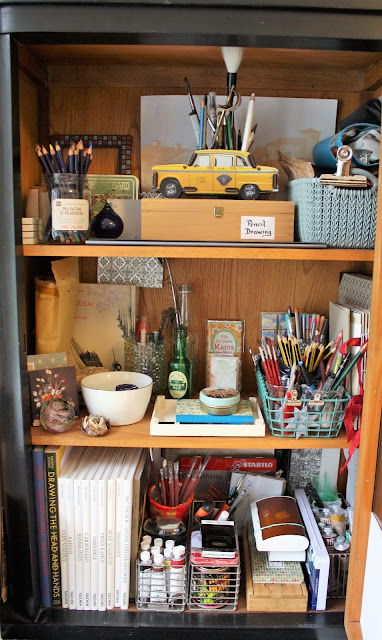Painting with stones- The mosaic chapel in Laxenburg
After visiting Schloss Laxenburg we bought an ice cream in the town just outside the gates and walked around a bit before getting in the car to go back home. Ice creams finished we walked into the church which wasn't that special, other than a pulpit that looked like it had been bodily dipped in gold, until on the way out I stuck my head quickly into the little side chapel right by the door. What I saw took my break away.
The chapel, dedicated to the memory of the donor's lost son Stephan, portrayed a picture of the stoning of Steven, the first martyr among other things, created in the most beautiful intricate mosaic work I have seen since visiting that mecca of mosaics, Ravenna a few years ago. This is not the checkerboard mosaic so popular in handicrafts or on small outdoor tables, this is painting with stones. Masterful color blending and cutting to create the most lovely painting work with a three dimensional surface. Looking into the little booklet on the history of the church it did not surprise me to find that the stones themselves are from Italy, most likely Ravenna, even though the layers are Romanian.
The center of the chapel is a depiction of Jesus on the cross flanked on either side by John and his Mother Mary in the scene where he give them to each other John as her son and she as his Mother.
To the left is Stephan or Steven in green looking at the cross while the 'mob' run up from behind to stone him. Interestingly this scene is taking place in front of the church in which the mosaic appears. It is quite normal to place the church in its artwork but I am unsure as to whether they considered that it might suggest something less pleasant for itself than intended.
On the other side of the cross is Abraham with the ram which appeared just as he was going to offer his only son. He too looks at the cross, while the son looks straight up at the 'lamb of God' on the cieling. Creating all sorts of allegorical connections.
One of the beautiful elements of this type of mosaic is that like a painting it includes background detail and depth. Mountains, hills clouds and even plants can be found in the places they would occur in a classical painting. A border in red forms a frame not dissimilar to the medieval painted frames I wrote about in my framing post. I have included a close up of a few very minute, slim plant, for a mosaic. In these the stone layer has imitated the brush stroke a painter uses where the brush, being pressed against the canvas is slowly pulled away from the canvas as the stroke is created, leaving at the very last moment a line as fine as the last hair or hairs of the brush. These are the merest slivers of glass wedged in between the larger surrounding stones of the hills and earth.
Just inside the entrance angels lead the viewer toward the center, reiterating again the central image in the crown of thorns overhead.
Lastly I include a close up of one of the angel's faces as an example of the technique used in laying the stones.
Have you seen examples of this type of workmanship? Does it appeal to you? Let me know in the comments.
If you liked this post you might also like:
- Museo della Carta
- Roman Ruins
- The Pastel Plant
To get posts as soon as they are published click on the subscribe button at the top of the page or Follow by clicking on the follow button.





















Comments
Post a Comment